The Woody Guthrie Center is a museum and archive in Tulsa, Oklahoma dedicated to American folk musician, activist, singer-songwriter, and artist Woody Guthrie. The Center honors Woody’s life and legacy by educating all that come to visit on his important role in American and music history. The Center also provides on-site programming, classroom materials, youth music programs, artist-in-residence programs, school outreach, internship and fellowship opportunities, and the Woody Guthrie Center Archives.
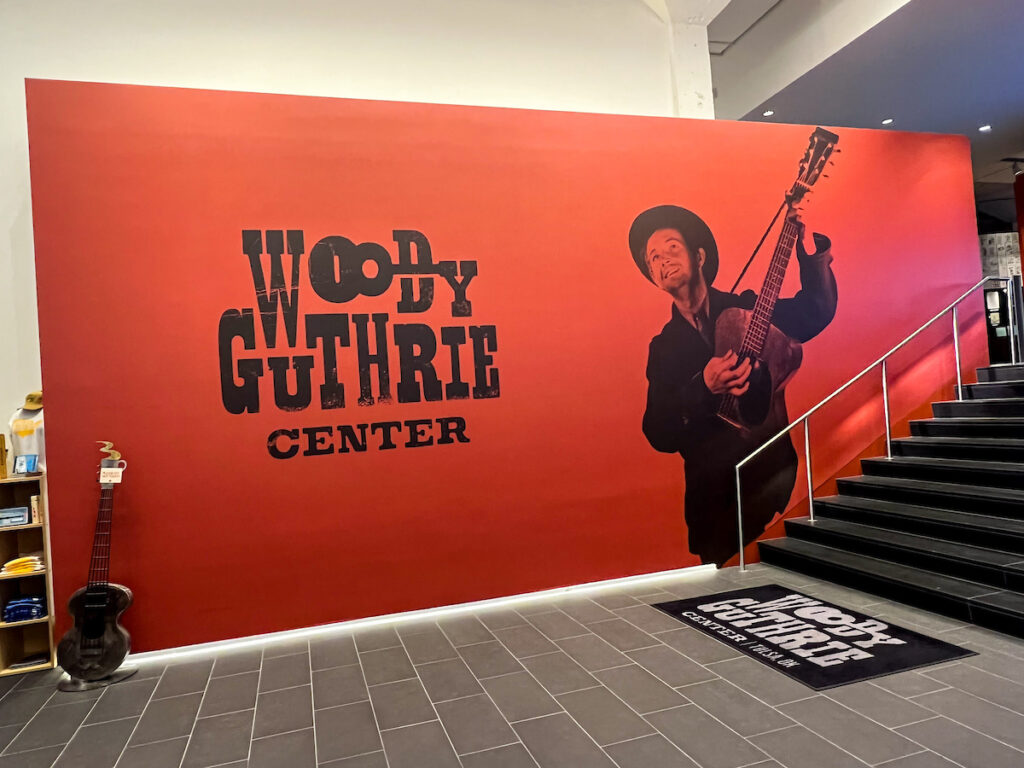
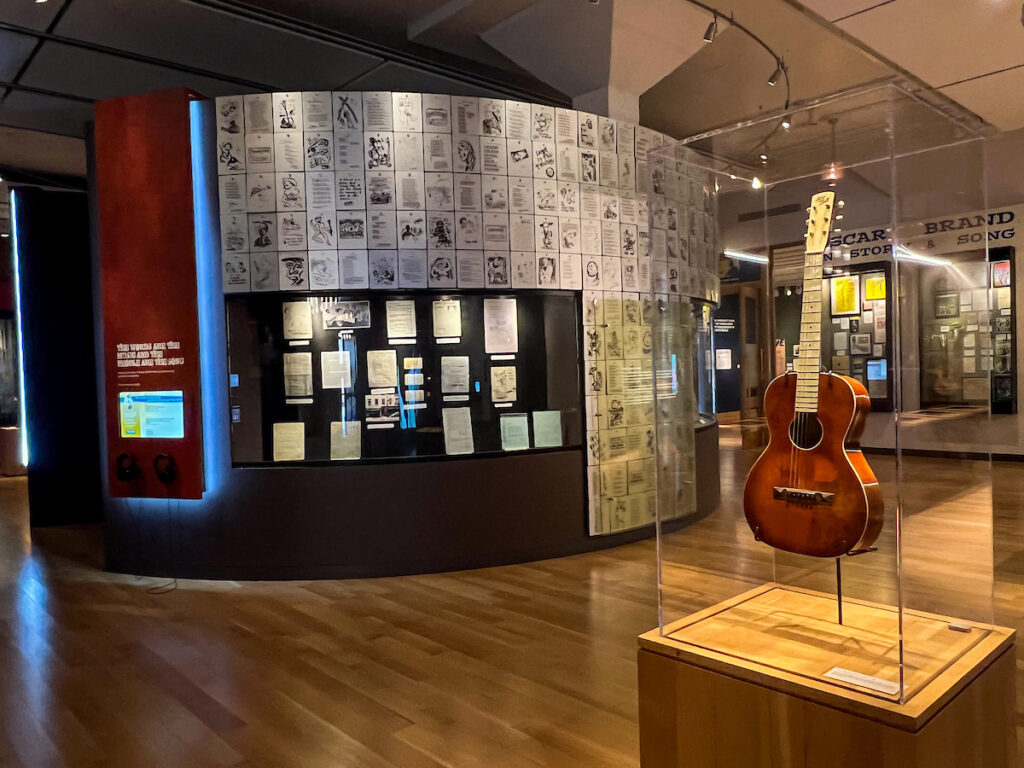
The Center has many interactive exhibits, like wall displays paired with headphones telling the story of Woody. There are also visual displays and scanned photos of his journal entries. The Center even has his real May Bell guitar on display.
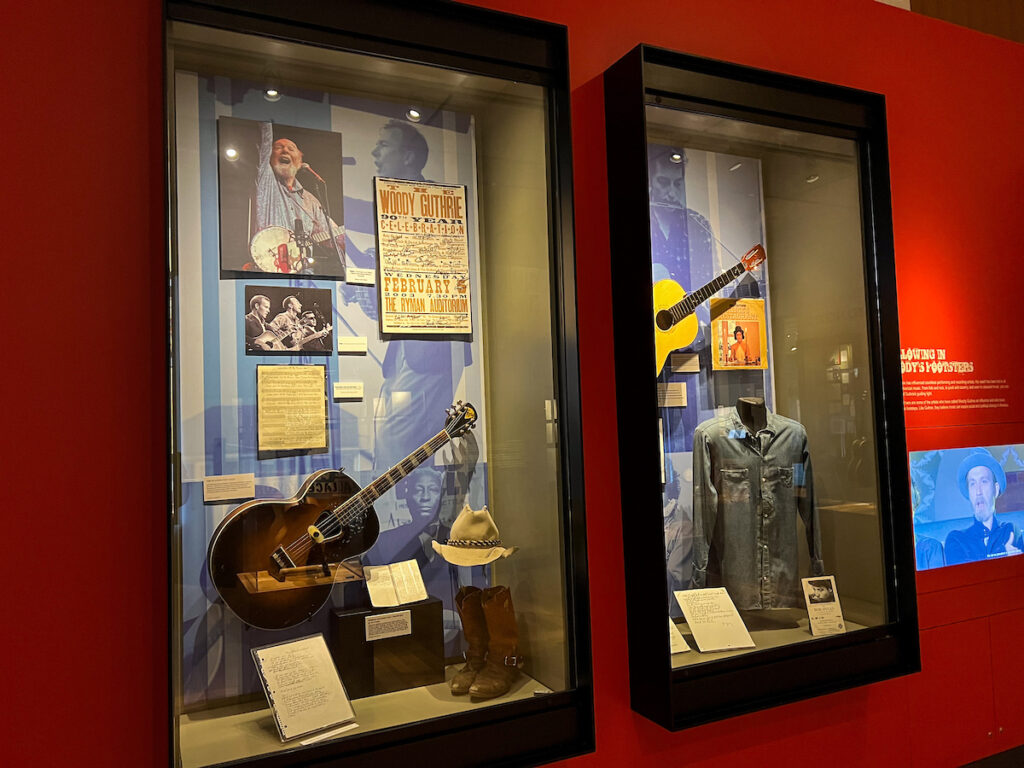
Woody wrote around 3,000 songs, of which only a few were ever recorded, like his most popular, “This Land is Your Land.” Woody Guthrie went down in history as more than just a musician. He was tirelessly dedicated to activism and advocating for civil rights. His archives of work at the Center consists of 100+ notebooks, correspondence, and other documents that show his mission of speaking for the voiceless.
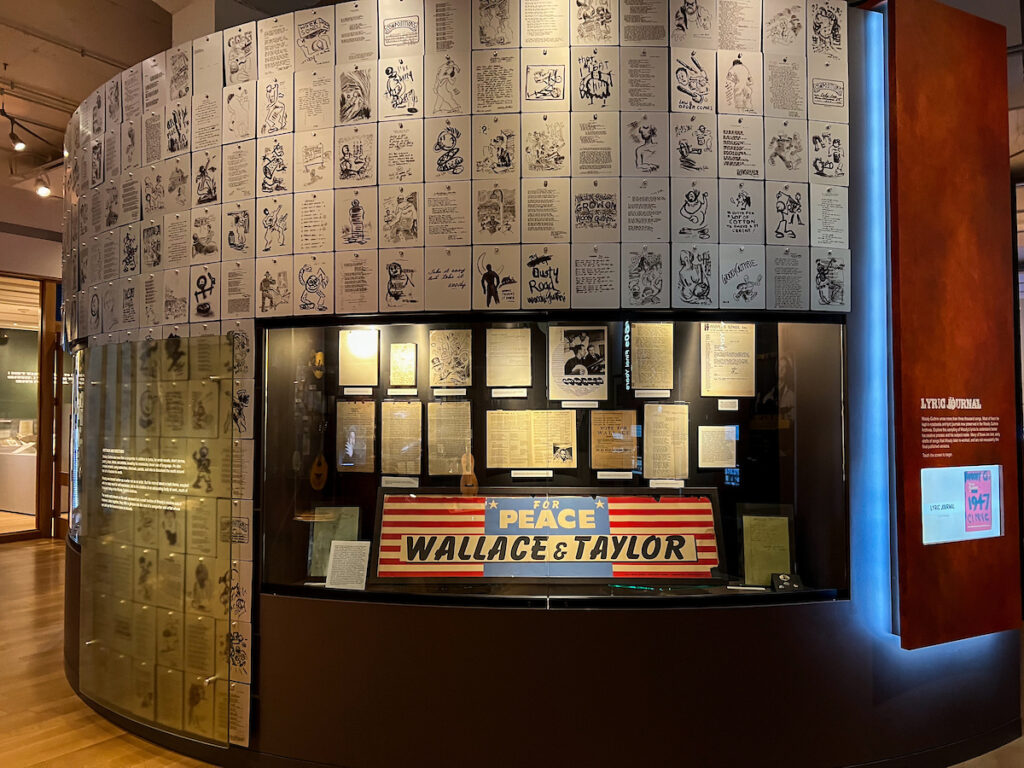
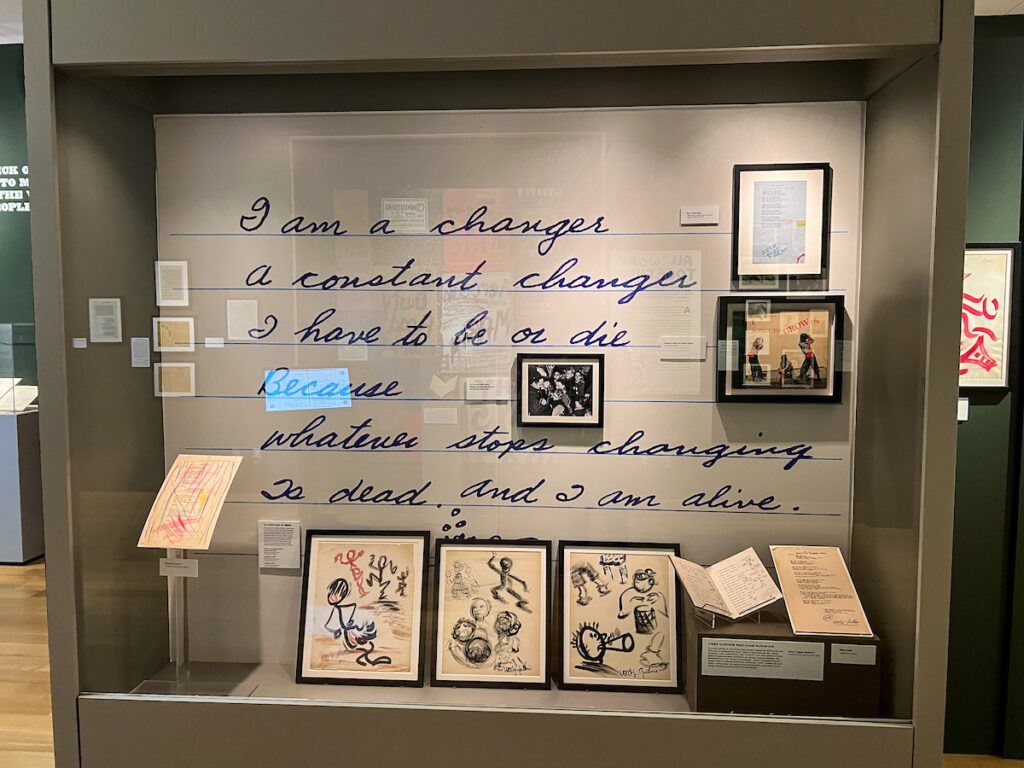
Woody was born in 1912, in Okemah, Oklahoma, one of the first oil boom towns. Okemah is located in Muscogee-Creek Nation, and near Boley, one of Oklahoma’s largest Black towns, and was considered a “Sundown Town.” Woody was surrounded by inequalities among different races. Despite growing up around hate and mistreatment, Woody showed us that you don’t have to turn out like those around you.
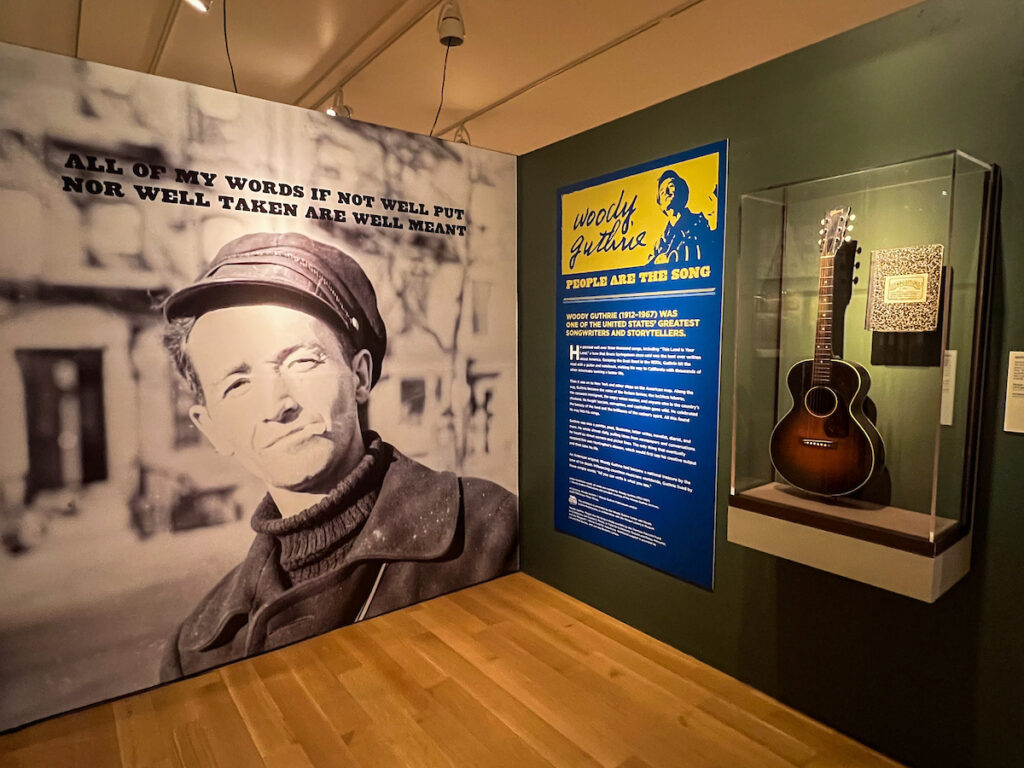
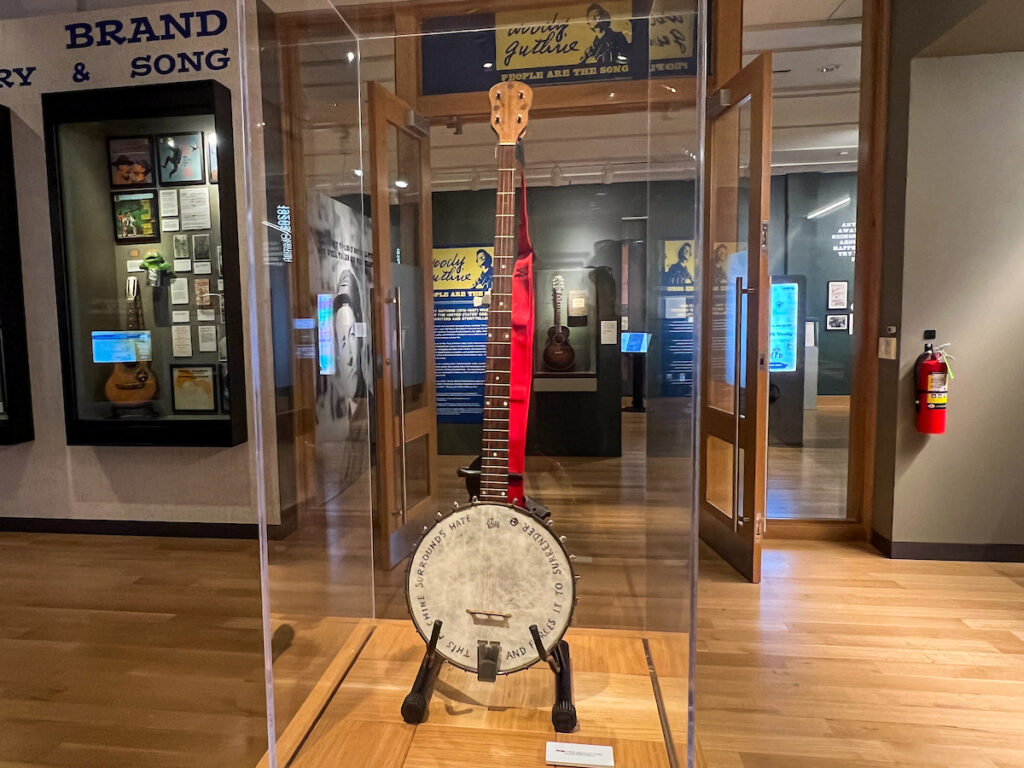
My time at the Center started with a short film on Woody’s life and accomplishments. The movie staff was wonderful and even started the movie from the beginning for me. Various artists paid tribute to Woody like Del McCoury Band, Old Crow Medicine Show, Rosanne Cash, Graham Nash, and Tom Morello.
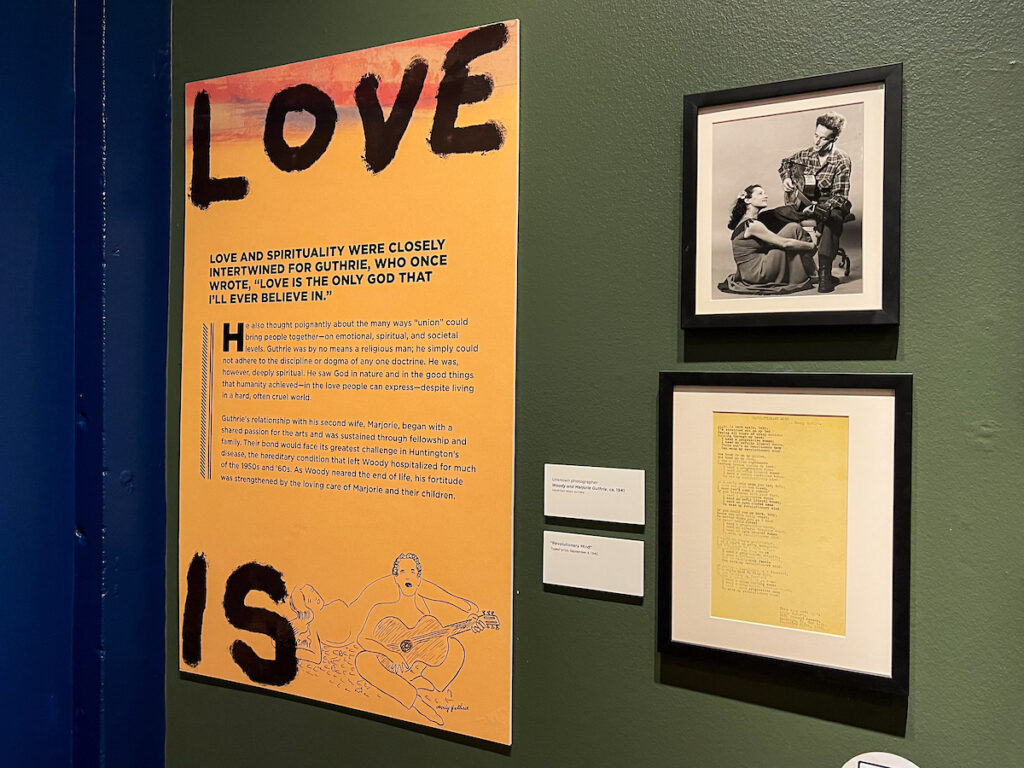
When Woody was only 18, he moved to Pampa, Texas with his father. Due to a fire, his father was severely injured and was to be nursed back to health by his brother in Texas. At the same time, Woody’s mother was committed to a mental institution due to Huntington’s Disease, a rare inherited condition that causes nerve cells in the brain to break down over time. This disease is the same one that would take Woody’s life in 1967.
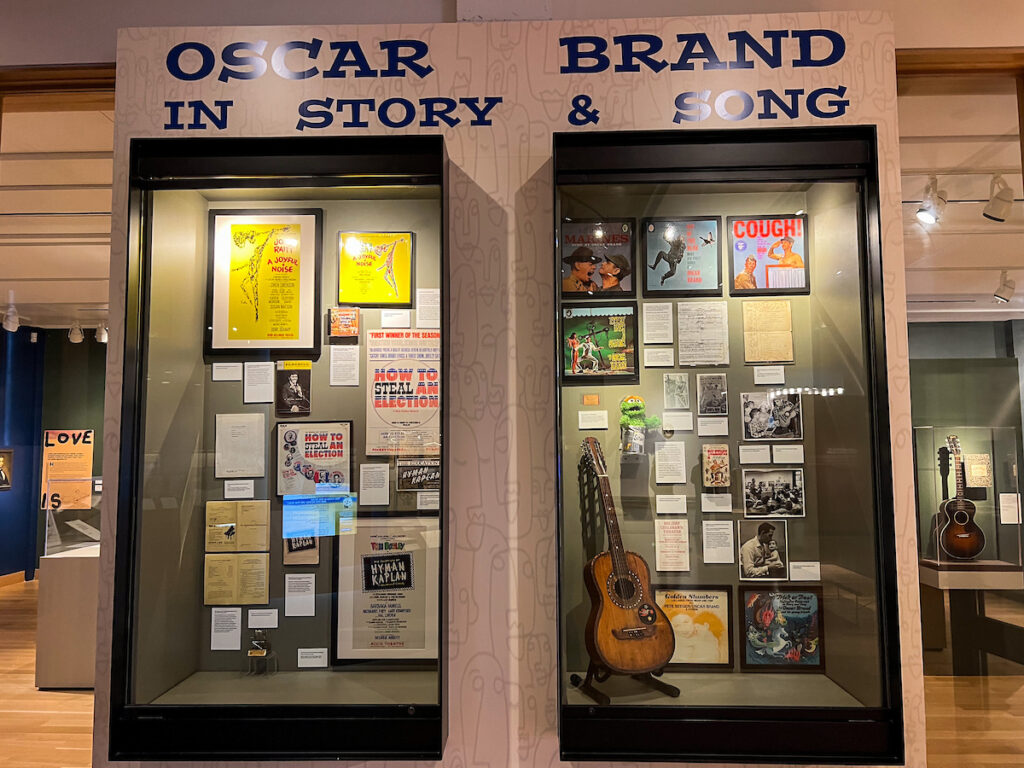
To make matters even worse, the Dust Bowl of 1935 hit Pampa. With little to no understanding of what caused these dust storms, people were led to believe that the world was ending. This led Woody to write his song “So Long, It’s Been Good to Know Yuh,” which tells of the tragedy of the Dust Bowl and a greedy preacher ready to collect from those who were fearful.
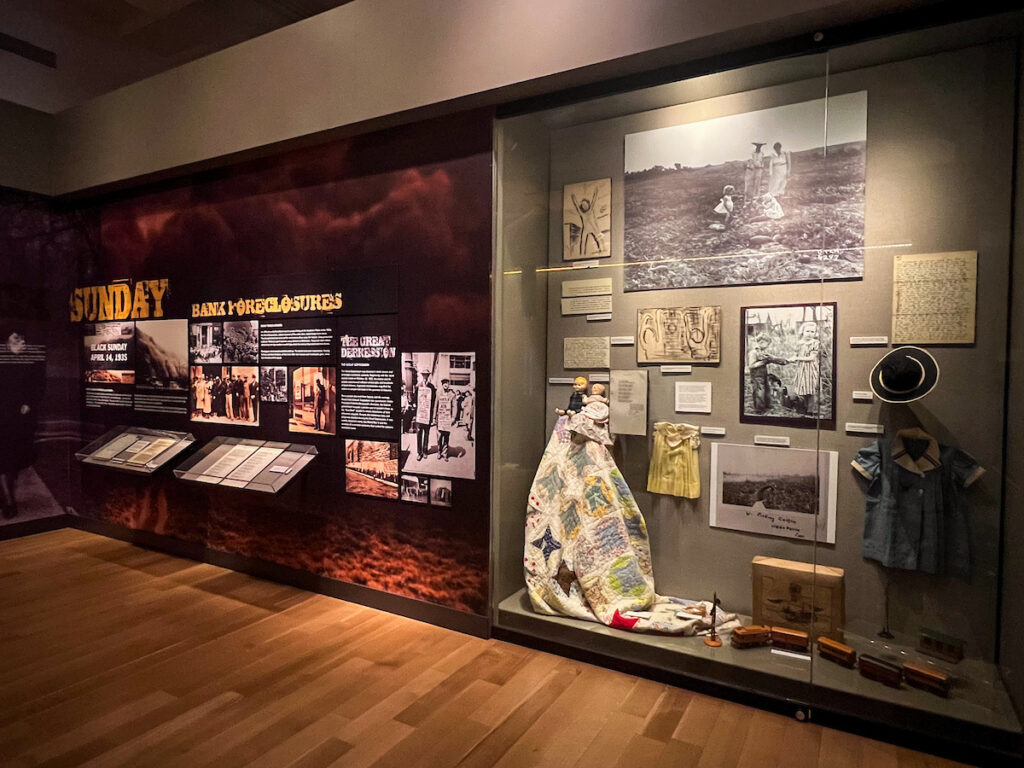
The Center has a virtual reality experience of the Dust Bowl, where visitors can immerse themselves on the porch of a 1930’s home and watch the storm of dust unfold around them. This experience led Woody to write his album, “Dust Bowl Ballads” which became his first and most popular album. Sharing the experience of the Dust Bowl and its effects, this album is considered one of the first concept albums.
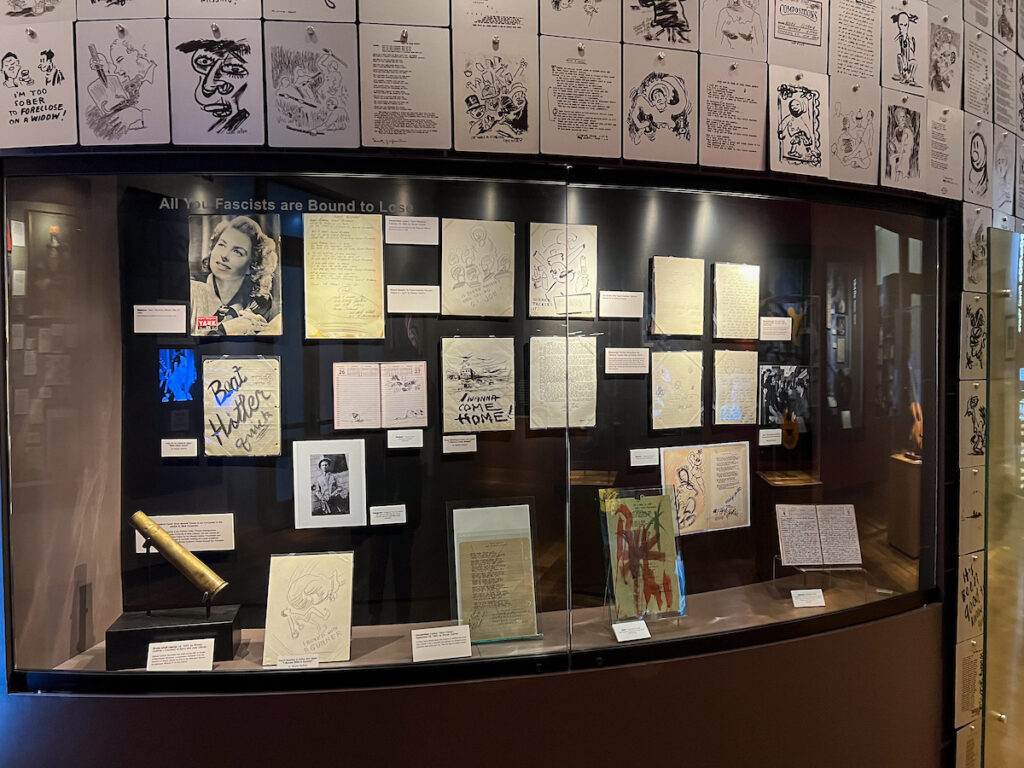
Woody joined the US Merchant Marine but was then drafted into the US Army. Known for his opposition to fascism, Woody painted the famous phrase “this machine kills fascists” on his guitar, inspiring many artists who came after him. In 1941, Woody joined the Almanac Singers, a politically active musical group. In addition to performing traditional songs, the group performed anti-war and anti-fascist songs.
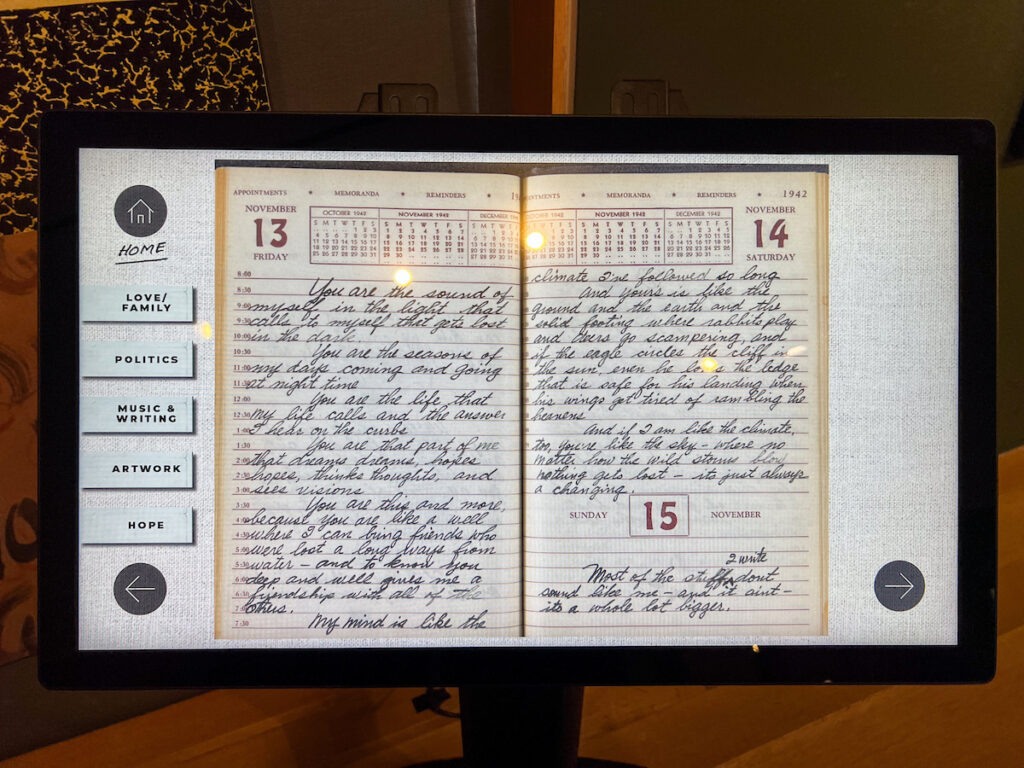
Living through some of the most historically remembered times, like The Great Depression, the Dust Bowl, and World War ll, Woody is truly someone who everyone should learn about. Despite all the hardships he endured and the history he lived through, he still fought his hardest to stand up for what he believed in and what would benefit everyone, not just himself. There are some valuable lessons and values to gain from the Woody Guthrie Center.
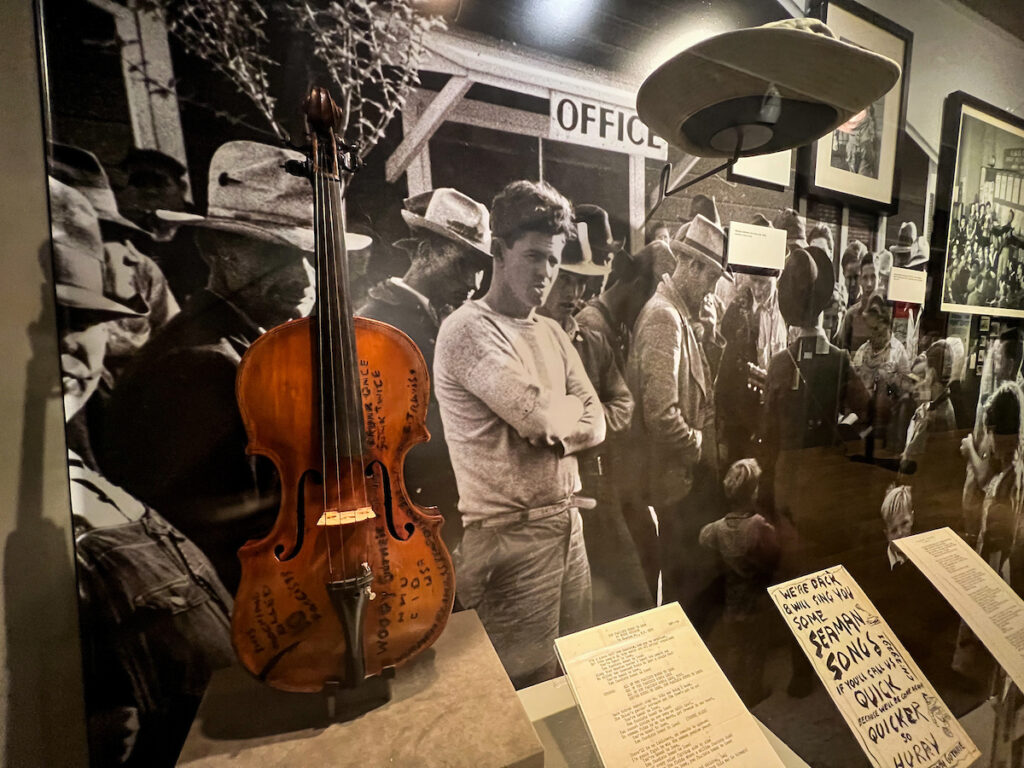
A trip to the center is a must-do for any music lover who visits Tulsa. It was a true highlight of my trip and I was so happy to be able to visit after it being closed on my prior travels to Oklahoma.
Tickets can be purchased online on the Center’s official website. Adult tickets are $12, Seniors (55+), Veterans and Students are $10, and Youth (17 and under) & K-12 Teachers can enter for free.
Words by Emily Cigan @emily.cigan and Amy Harris @thetraveladdictig

